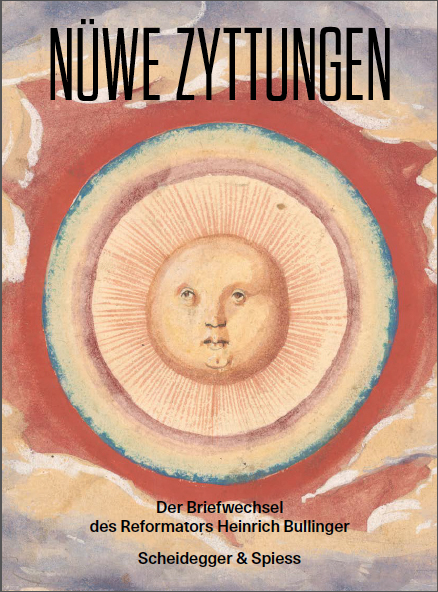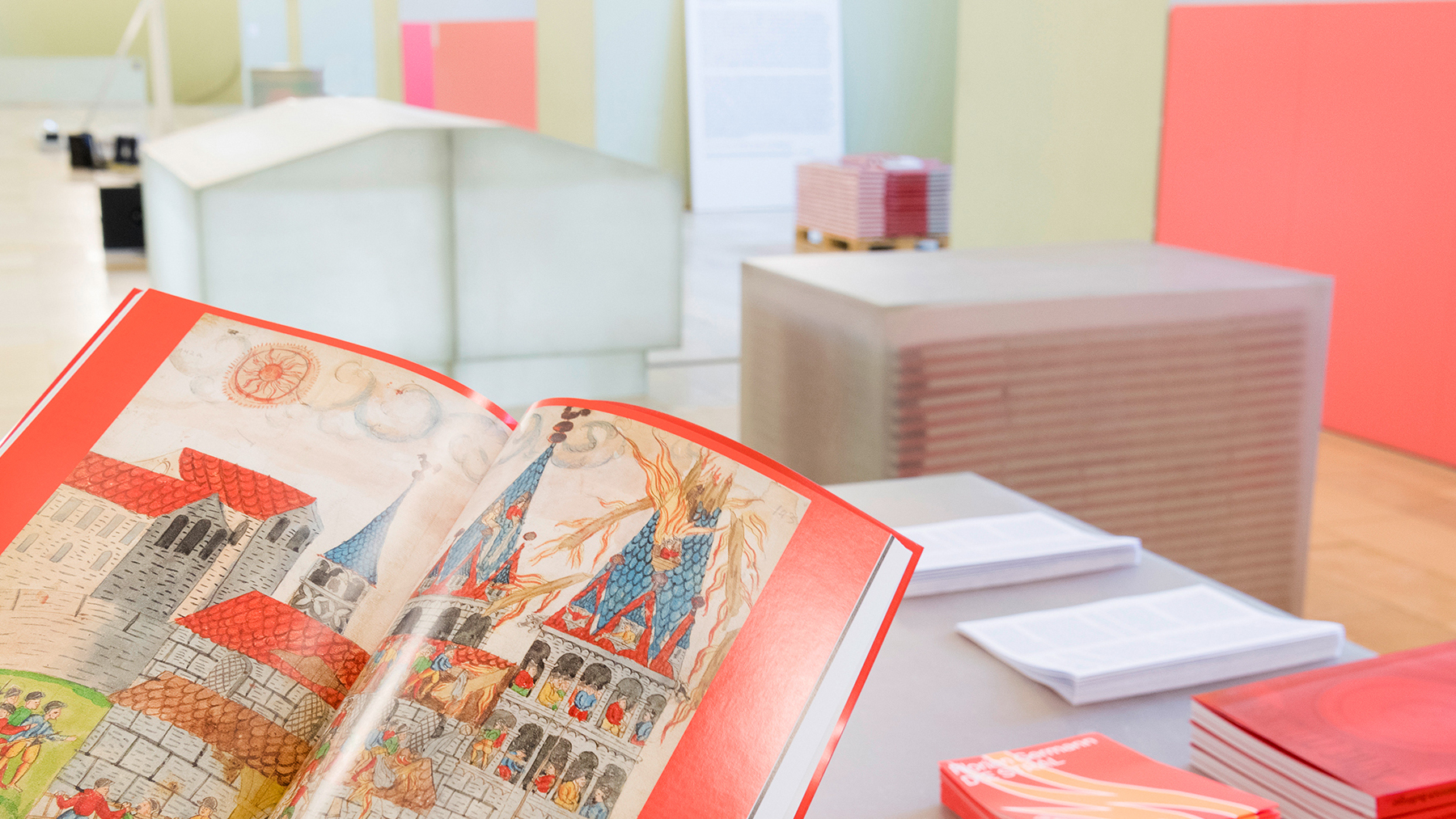The Reformation and the Bolt from Above
On 7 May 1572, the heavens opened over Zurich – after years of extreme weather conditions and crop failures – and a bolt of lightning struck the Grossmünster church, the epicenter of the Zurich Reformation movement. An incident that today would be seen as nothing more than a freak natural accident was at that time interpreted, against the prevailing backdrop of ideological clashes, as a sign from God. Rumors quickly began making the rounds, describing the lightning bolt as God’s way of making His feelings about the Zurich church leaders clear. Heinrich Bullinger, Zwingli’s successor as a reformer, recognized the danger of these incorrect interpretations and wrote letters rationalizing the incident. He wrote his matter-of-fact descriptions on a separate piece of paper, which could be copied out by hand and passed on. In this way Bullinger anticipated possible inaccurate reports and maintained authority over how the “holy” bolt of lightning would be interpreted.
Bullinger as a chronicler of his time
The lightning incident is only one example from the extensive correspondence of reformer, humanist and historian Heinrich Bullinger (1504-1575). In 12,000 letters exchanged over more than 50 years with clerics and church leaders, kings and princes, merchants and students, Bullinger debated theological matters, reported political events, explained the economic situation and described weather conditions. Thanks to this Europe-wide correspondence, Bullinger and Zurich were at the center of an efficient information network.
“If Heinrich Bullinger had lived today he would definitely have used social media,” says Gabriele Siegert, Vice President of the University of Zurich, talking about the exhibition Florian Germann: Die Stral / Nachrichten von Heinrich Bullinger in UZH’s main building. The University is staging the exhibition, an artistic take on the academic study of the Bullinger letters, as part of the 500th anniversary celebrations of the Protestant Reformation in Zurich. For the exhibition, sponsored by ZH-REFORMATION.CH, Swiss artist Florian Germann has created an installation that takes a creative look at the letters’ history. Some of Heinrich Bullinger’s correspondence can even be taken home in the richly illustrated book issued to accompany the exhibition, Nüwe Zyttungen. It offers exhibition visitors a fascinating view of various aspects of the Reformation, and shows how the letter was an important medium for spreading news. A series of events in connection with the exhibition will tackle themes such as the Apocalypse, among others.
Experimental set-up with different chapters
Florian Germann uses the natural phenomenon of the lightning strike – the Early New High German word “Stral” means “flash” – as his inspiration for five individual sculptures which together form an installation that visitors can walk through. He is interested in exploring the energetic processes and the physical, social and narrative powers that are unleashed and that influence people. “Germann arranges his objects, a mix of physical tools and modernist sculpture, in a type of experimental set-up in different chapters. The contents evoke references to the lightning strike incident of almost 500 years ago. The artist also explores the effects of climate change on communication, society and faith today,” is exhibition curator Luca Beeler’s summary of the installation.
Making Zurich’s history and culture available digitally
“Bullinger’s letters provide a witness for the history and culture of Zurich and of the whole of Europe in the early modern period,” explains Peter Opitz, professor of ecclesiastical and dogmatic history. Opitz is head of the UZH Institute of Swiss Reformation History, where around 3,000 letters in Latin and Early New High German have been edited to date. As part of the process, many different styles of handwriting had to be deciphered and the letters were classified and explained according to their historical context. Summaries of the documents aim to make it easier for people to access them, but the work is still far from being complete. “It is also planned to digitally publish this historical treasure trove of Zurich to make it available to the international research community,” says Opitz.
Exhibition book: Zurich as hub of news exchange

The publication Nüwe Zyttungen throws light on an active news network among reformers and on the communication strategies of Heinrich Bullinger. With his Europe-wide network of correspondence, he managed to create a comprehensive system of news and made Zurich into a hub of news exchange. Handwritten notes did not just go from one sender to one recipient and end there. They were copied, passed around, forwarded or collected in chronicles.
(Editors: Luca Beeler, Gina Bucher, Andreas Koller, Verlag Scheidegger & Spiess)
